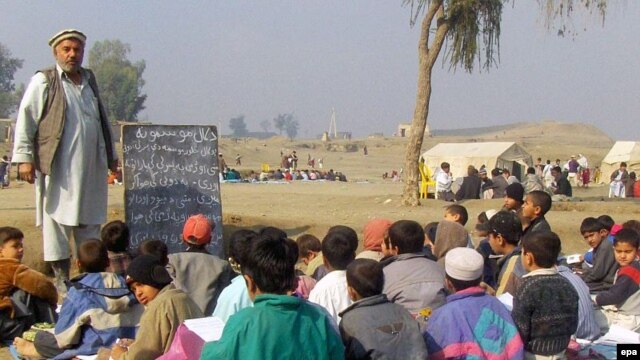The Afghan Education Ministry says the country began the school year with a record number of children attending school -- nearly 6.5 million, including girls, enrolled in over 9,000 schools.
But four months later, tens of thousands of students were out of school again as Afghan insurgents increased their attacks on schools -- with at least 72 students and teachers being killed since school began on March 23.
During that same period, 62 schools were burned down and another 640 schools were closed because of a lack of security. That's already more closed schools than all of last year, when 635 schools were closed or burned down.
Afghan Deputy Education Minister Mohammad Siddiq Patman tells RFE/RL that many schools cannot operate in Kandahar, Helmand, Oruzgan, Paktika, Zabul, and other provinces due to insecurity.
Patman says that in addition to the physical attacks on students, teachers, and schools, the Taliban has also staged a "psychological war against education."
"They distribute threatening leaflets to residents warning them not to send their children to school or face the consequences," he says.
Appeal For Local Support
The primary school system, the renewal of which is widely considered one of Afghanistan's major success stories since the fall of the Taliban in 2001, has become an easy target for those who want to weaken the central government in Kabul.
"Schools, obviously, don't have armed forces to guard them," says Patman. He says the Education Ministry has decided to launch a campaign among local people to encourage them to help protect schools from the insurgents.
"We have begun a wide [campaign] to raise people's awareness," Patman says. "People's responsiveness has increased in comparison to previous years and they have started to protect their schools. We have set up councils and we've succeeded in reopening schools in some areas."
In villages, education officials work closely with influential local leaders -- including tribal elders and mullahs -- to gain more public support for schools.
Patman says that to ensure the safety of schools, councils have also tried to persuade "local Taliban" to avoid attacking schools, students, and teachers.
They spread a message among the insurgents and villagers that schools are free of any kind of ideology and nonpolitical.
Eager For Education
In many areas, local people need little or no encouragement to send their children to school. Girls were deprived of education under Taliban rule when only boys were allowed to attend religious schools.
The eagerness for education has been so great in many Afghan areas that students do not even mind having classes in tents or even under a tree.
Girls now make up at least 35 percent of the students.
Masooma, a 13-year-old girl from the village of Chanjeer in the volatile Helmand Province, says she was thrilled when her parents sent her to a local school three years ago. However, the school was later closed after threats were made by insurgents.
Like many children her age, Masooma finds it difficult to understand why her school is not able to operate.
"Since last year, when I was attending the third grade, our school has been closed. We hope it will reopen soon," she says. "I'm very upset that our school is closed. We ask, 'Why are schools in other areas open but in our area they are locked?' We want our schools to be reopened."
In the meantime, the Education Ministry is pressing ahead with its ambitious plan to build 30 new schools in each of the country's three dozen provinces.
Construction has already started in many areas, including in the northern Panjshir Province, where local authorities say they have been promised $1.6 million to build new schools for 12,000 children.
The Education Ministry says it will begin similar projects in the more violent areas in the south of the country when the security situation there will allow it.
Until then, thousands of eager girls like Masooma will have to wait for their chance to learn.


